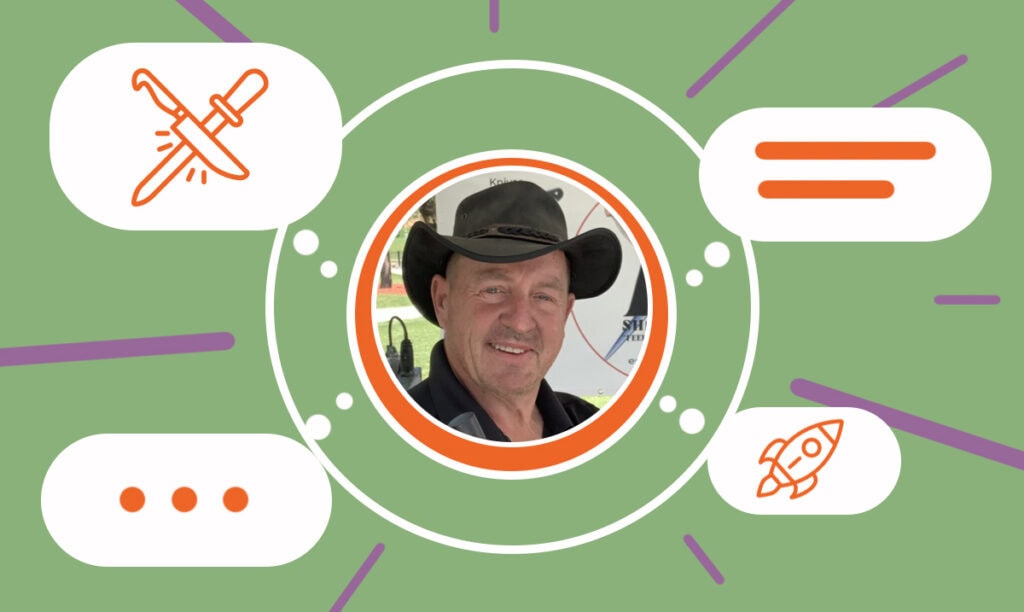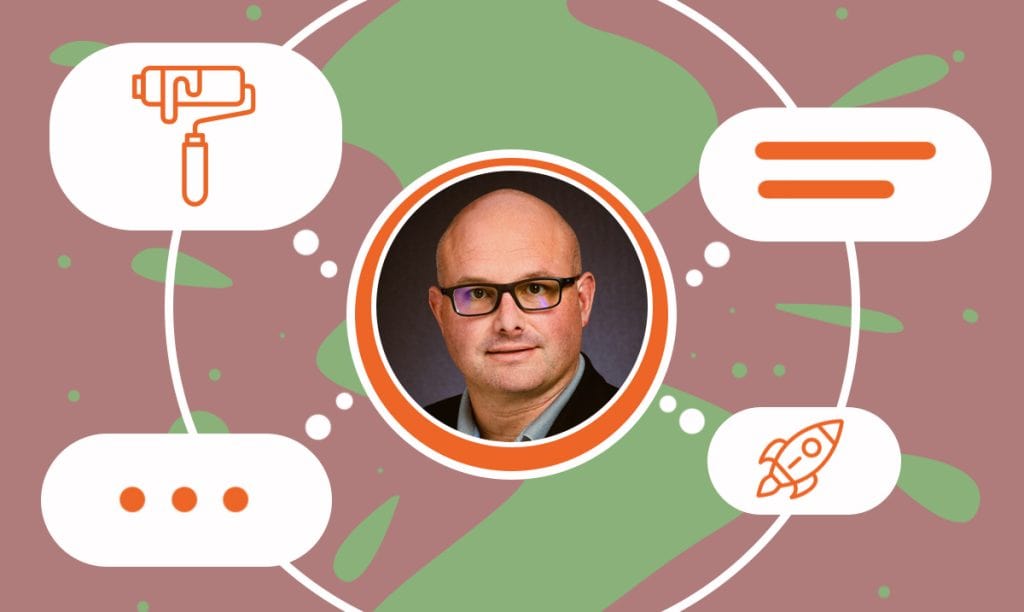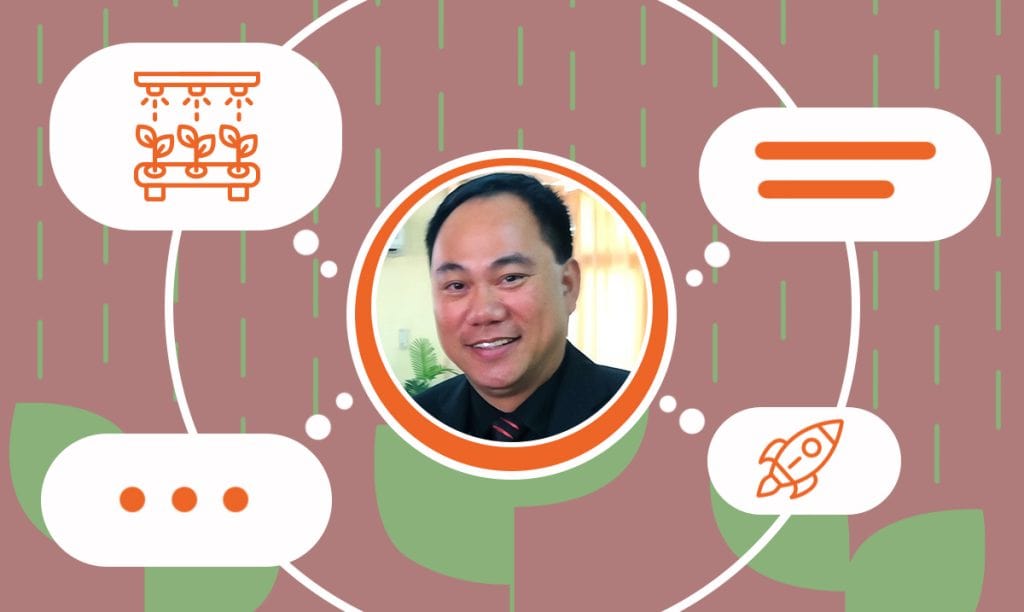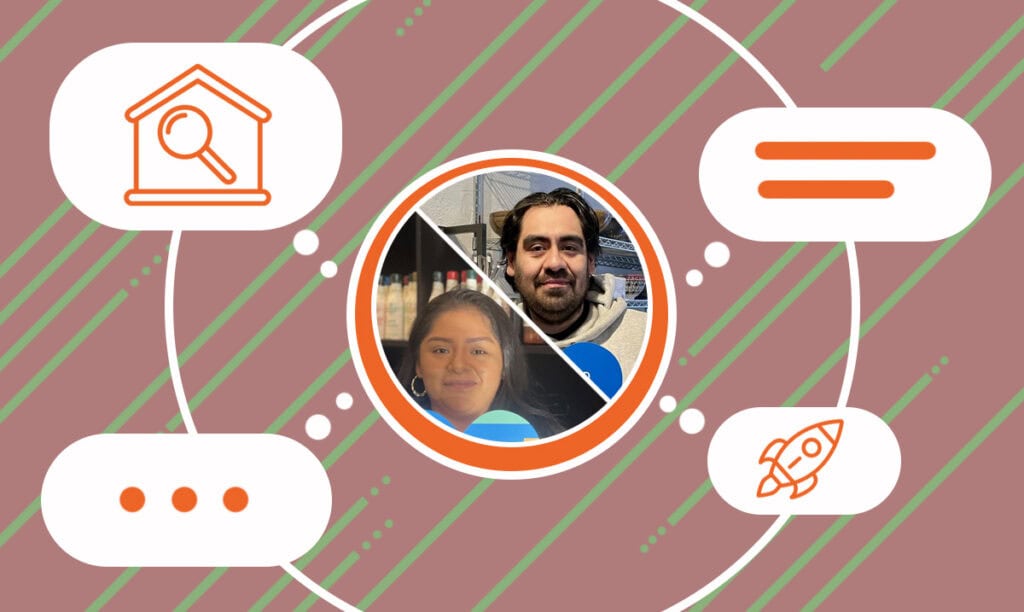When Chris Heerdegen founded OnDemand Painters, he wasn’t just looking to launch another painting company; he wanted to transform the industry.Rec ...
The Art and Business of Knife Sharpening with Erik Newsholme
Written by: Esther Strauss
Esther is a business strategist with over 20 years of experience as an entrepreneur, executive, educator, and management advisor.
Published on May 21, 2024

Behind every finely diced vegetable and every precisely sliced cut of meat lies the skillful work of a master knife sharpener. Erik “The Blade” Sharpener (Erik Newsholme) is a maestro of the blade in the heart of Colorado, and his journey through the world of knife sharpening has been as sharp and precise as the edges he crafts. From humble beginnings to honing his craft with dedication and expertise, Erik shares insights into his entrepreneurial voyage, navigating challenges, perfecting techniques, and carving out success in the sharpening business.
If you’re located in the Colorado Springs area and you find yourself in need of knife sharpening, feel free to contact Erik at any of his socials: Facebook, Instagram, YouTube, and X. Even if you don’t need these services, check these pages for invaluable advice!
Now, let’s jump into Erik’s story, exploring the art and business of knife sharpening.
Origins and Training
SBS – How did you start your knife sharpening business?
Erik – I’m a second-generation sharpener. My dad started sharpening in the fifties, and I started in the eighties in Atlanta, Georgia, sharpening for restaurants. My wife and I moved to the Colorado Springs area in 2016, and a new local farmers’ market opened. We went there, and I saw everybody buying good, fresh veggies and fruits. However, I knew their knives were dull, so I went to the managers and started sharpening for farmers’ markets and the households here.
My business is unique here. I have a mobile setup, so people can either drop by here where I live, or I go to them, or I’ll do five different farmers’ markets a week. Not many people do what I do, an old-world craft and the people enjoy the service and the benefits of a sharp knife.
As I said, I started with the restaurants in Atlanta. We did anywhere from 350 to 400 different restaurants there. The people in the restaurants don’t like taking their stuff somewhere else, so they love the convenience of service coming into the restaurant and taking care of the sharpening needs there. This way, they can proceed with their day with good sharp blades.
I also do restaurants in the Colorado Springs area. However, there are many residential people who need the service just like the restaurants, and there isn’t an outlet for their different sharpening needs. I’m a full-service sharpener, and I do knives, scissors, serrated knives, lawn and garden tools, and a variety of blades, so they don’t have to search for a bunch of different people. It’s all done in one place, and there’s the convenience of having it done at home, so they don’t have to worry about wrapping it up and taking it somewhere.
SBS – Did you learn the skills from your father, or did you have additional training for particular types of knives?
Erik – My dad was always able to put an edge on a knife, and that’s how he got started with it. I picked up the skill from him, and he watched over my shoulder, telling me how to do it. There was also a lot of practice, patience, and learning about different types of blades. I was also learning as I went through sharpening for restaurants, caterers, and commercial chefs. I know what sharp is because I have a lot of experience.
However, people use lawn and garden tools, and nobody sharpens them anymore, so that’s an extra benefit of having somebody like myself who’s unique and does every kind of blade. It’s convenient, it’s time-saving, it’s money-saving, and it’s a really good benefit for people to take advantage of.
Navigating Challenges
SBS – When you moved to Colorado, did you have some challenges that were tough to overcome?
Erik – Like any business, getting the word out about what you do takes time. That was (and is) my biggest challenge. I have social media and a website, and I’ve been in a newspaper and on TV. But here, people have gotten so used to using dull blades or not having a sharpener that they don’t understand what sharp is.
The education portion of any business person is getting your service out there and continuously providing and getting the word out and educating. That’s why I do the farmers’ markets. There are a lot of people in a small area to whom I get exposure. Again, with any business, you have to stick with it because it does take time to grow and get the word out. But once the word’s out, then it takes off.
Crafting a Sharper Business: Marketing Strategies
SBS – Do you have some marketing strategies to attract new customers or retain the old ones, or are you doing it the old-fashioned way via recommendations? Has it changed over the years?
Erik – It’s the same principle because sharpening is not a one-time thing. When I do sharpening for people, I take all their contact information. Then, in six months to a year, I contact them again for recurring revenue and a relationship with a sharpener, which is odd, and not many people have it.
In my current location, I’ve been doing this for five years and slowly building up a good database of existing customers. Today, I’ve got 100 emails and phone calls to make to remind people that it’s time to get their knives, scissors, and garden tools sharpened, and when I do that, they appreciate the reminder.
These are the things that small business people have to do to stay engaged with their customers and stay on top of people’s minds because people are so busy with their own lives. You have to work, work, work. You can’t just sit on your behind. You have to plan and work day in and day out because money’s just not going to fall off the tree. You have to go out there and get it. It’s there, but you have to have a good work ethic and a really good product.
I’m one of the best to take care of all the different items. I’m also trying to educate people and explain that they can have good-quality blades and a good maintenance program with a professional sharpener, and their investment will last a lifetime.
Sharpening Techniques
SBS – Can you explain the process of sharpening or repairing a typical knife?
Erik – I have all the equipment necessary to do the sharpening, so when people come to me, their blades undergo the process of metal being removed to expose a new edge. That’s how the sharpening starts. Since the nineties, I have had a machine that removes the metal and another that finishes it.
Blades are different based on their country of origin. German knives differ from Japanese, French, Swiss, English, etc. A good sharpener will know the intention of the blade and where it came from and then sharpen accordingly. My machines are simple, but the experience, knowledge, and craft of the eye and hand make everything work together.
I’ve sharpened a better part of two million different types of blades during the course of my career, so it’s a very quick process for me — because I’m here to make money on it as well. The method I use is the same as a lot of the manufacturers use — when they make the knife, they put an edge on it with what’s called a belt sander (it’s just a rotating piece of sandpaper) that removes the metal just enough to expose a new edge. Through a series of other machines, we get a finished product. I use buffing machines that help polish and finish the edge, so it’s a very good, sharp, serviceable blade, depending on what type is needed. That’s just the basic process.
Everyone who comes in has different requirements (e.g., repairs or tip reshaping), and I also take care of all that. I sharpen, repair, educate, and consult, so it’s a lot of knowledge coming with a professional sharpener that a lot of people don’t realize until we get into the appointment.

Cutting Through Logistics & On-the-Go Sharpening
SBS – How do you manage the logistics of your sharpening services? Is it difficult to bring all the tools with you?
Erik – That’s a challenge, especially in the farmers’ market. Some people don’t want to handle a whole handful of knives or tools, and that’s why I have the mobile service. I go to them so they don’t have to worry about gathering all their tools to bring them somewhere.
Some people bring their tools to the market. They bring their whole knife block, lawn and garden tools, and scissors. Those tools are dull, so people are not going to worry about getting cut too much. I also wrap those blades up in some nice deli paper when I give them back, so they have a safe package to go home in. I’m going to do a blog post on my website on how to wrap up your knives to safely bring to market so you don’t feel like you’re going to hurt someone.
Finding the Edge: Pricing Considerations and Strategies
SBS – How do you determine the perfect pricing for your services? What advice would you give to someone about setting prices?
Erik – Well, I had a professional service create my website a couple of years ago, and they asked me for some competition-type websites so that they could learn about the craft of sharpening. I spent a couple of weeks looking at 100 different websites across the country. I looked at different themes and things like that to show the web developer. I also looked at average prices for sharpening specific blades across the country. Then, I looked at what I bring to the table. My experience and professionalism are worth a better dollar than somebody just getting into it.
I’m trying to make it affordable for people because they have no idea what it would even cost, but I also look at the replacement value of that particular item and price accordingly. There are a lot of things that go into pricing a service like this to make it affordable for the consumer and the restaurateur while also making it profitable for me.
Tools of the Trade
SBS – What key tools or equipment do people who want to start this business need?
Erik – Well, it depends on what direction you want to take in sharpening because there are so many different items. Nowadays, it’s really popular to niche down and focus on knives, scissors, serrated knives, lawn and garden tools, or whatever the case might be.
Before you buy a whole bunch of machinery or look at these so-called experts on YouTube, Reddit, or wherever, you have to find a focus. If you’re going to do specialty items, the sharpening machines can be costly. I do the hair-cutting shears for beauticians — that’s very, very niche, and the machine itself is $2,500. The machines I have for knives, general scissors, and similar stuff are not as expensive, but I’ve had them for such a long time. One of them is so old and unique that you can’t find it anymore and I can’t replace it.
So, you have to find a direction, have a good business plan, and have a good business model focusing on residential, commercial, restaurants, etc. That will dictate the machinery and the training you need for the volume of sharpening you’re going to do.
Rewards of the Trade
SBS – What has been the most rewarding aspect of running not just your own business but also a knife sharpening business?
Erik – A long time ago, Julia Child wrote a book called Joy of Cooking, and I’m trying to tell people they’re going to have the joy of cutting and have a fun experience in the kitchen versus the frustration and chore that a lot of people have these days because they’re using very dull tools.
It’s funny, especially in the restaurant world. I would come in, and the people in the kitchens would see me, and their day got better because I came in and was going to sharpen their blades, so they knew their job was better. It’s the same thing for people in residential. They are coming back to me time and time again because it’s a joy to use sharp blades in your kitchen.
From Whetstone to Wisdom
SBS – What advice would you give someone who is just starting a knife sharpening business?
Erik – First, you have to learn what sharpening is and what sharp is — and that’s right here in the fingers. To do that, you have to learn the craft. When people give me an item, there’s no question that it’s going to be done professionally and properly, just how it’s supposed to.
You must seek out good professional people, not somebody who has a big following on YouTube or social media. It’s really easy to have that kind of thing, but your training should come from people like myself, who service commercial operators, restaurants, and commercial chefs — because their standards are very high. They’re not going to allow me back in a restaurant if I’m not providing them a good quality serviceable blade that they can use day in and day out. Residential users are going to be very happy because they’re getting commercial-grade sharpening at their houses for an affordable price, and that’s something that’s really hard to beat in today’s market.
Read also: Knife Flight’s Success in the Mail-In Knife Sharpening Market
Subscribe to Our Newsletter
and gain insider access to cutting-edge business insights and trends.
Featured Resources

How Chris Heerdegen Built a Multi-City Painting Business
Published on October 4, 2024
Read Now

How a Retired Veteran Built Kern County’s First Hydroponic Farm
Published on September 6, 2024
Gerry Mateo, a retired veteran, found an unexpected opportunity during the pandemic with the creation of FilAm Vets Hydroponics Farm. As the firsthy ...
Read Now

How Family-Owned Kitchen Supplies Business Thrives in Brooklyn
Published on June 25, 2024
In the heart of Clinton Hill, Brooklyn, Indulge Kitchen Supplies stands as a testament to the passion and dedication of its founders, Luis and AmyTa ...
Read Now
Comments